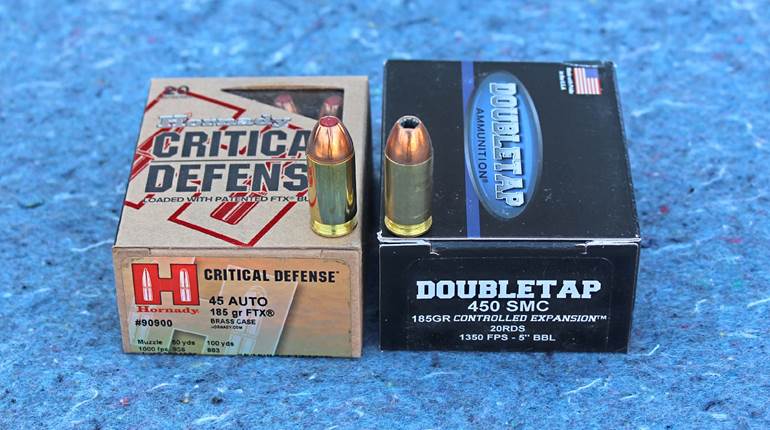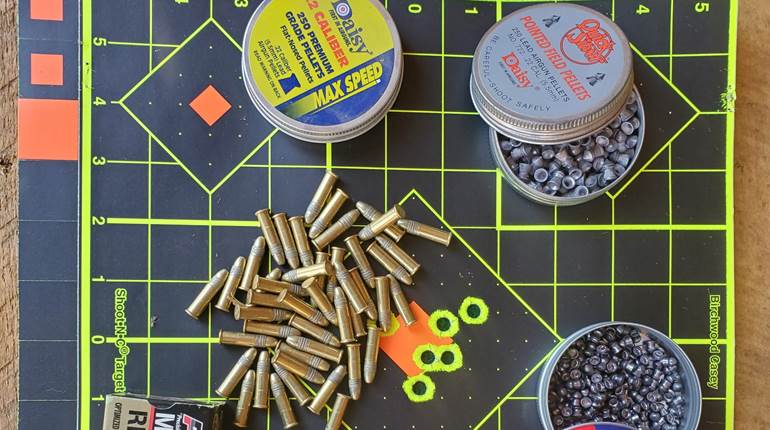
In pursuing both personal and professional shooting endeavors over the last several years, I've prepared a fair number of new and used firearms for first-time trips to the shooting range. Experience has taught me that one can never assume a gun is ready to shoot until it has been thoroughly checked out. While some gun problems will not present themselves until the gun is fired, many potential issues can be resolved or avoided if they are identified before the trigger is pressed. Here are a few important steps to take before loading a new gun, or a used gun you have never fired:
1. Verify the Accessory Set
If the gun arrives in a box or a case, go through the contents to verify that all the bits and pieces are present and compatible with the firearm. It's unusual to get an incorrect component, like a .40 S&W magazine shipped with a 9 mm pistol, but it does happen. A more common occurrence is for something to be missing, such as receiving only one magazine instead of two. For new gun purchases, the best time to verify the accessories is at the gun shop before you buy it and take it home.
2. Read the Owner's Manual
Instruction manuals are boring. I know because I've read so many of them. Gun manuals in particular are notoriously inconsistent in their quality and usefulness. Some will leave the reader feeling like they are ready to field strip the gun blindfolded while others are about as instructive as a set of prehistoric cave paintings. Nevertheless, it's important to take the time to read the manual from cover to cover. More often than not the subtleties of loading, operating, and maintaining a gun will be hiding in that little booklet along with some of the sticking points that can be avoided if you read the fine print.
If it's a used gun that has no manual, then get one. Several companies now provide printable copies of their manuals online. If you inherited a dusty musket that was built before the invention of movable type, it would be wise to take it to a qualified gunsmith to look it over. It may be a valuable antique that should not be shot in order to preserve its value, or it could be too old to shoot safely with modern ammunition.
3. Clear the Bore of Obstructions
Recently I looked through the barrel of a test rifle using a bore light to find an object that shouldn't have be there. A few strokes with a cleaning rod revealed that the 2" polymer chamber flag shipped in the rifle's chamber as a safety measure had been 6" long before it broke off leaving a 4" chunk of plastic stuck right where the bullets would fly. A shiver ran down my spine as I imagined the "educational opportunity" I had just avoided by taking the time to conduct this simple check.
4. Give It The Once Over
Although some mechanical problems are blatantly obvious, others can be subtle or hard to find. I remember an old CZ 52 pistol on display at a local gun show. It looked solid and the seller's price was very reasonable. But despite the desire to just snap it up, I took the time to examine it more closely. As it turned out, there was a fine, nearly invisible fracture in the frame running from the center of the dust cover back towards the trigger guard. The CZ 52 is chambered for the potent little 7.62x25 Tokarev cartridge, so I had no desire to be holding the gun when the frame finally gave out. Once the seller saw the crack, the pistol was removed from the table and a potentially dangerous gun failure was averted. A few minutes spent in giving a gun an examination is time well spent.
5. Strip, Clean & Lubricate
When it comes to gun safety, we like to stick to simple, easy to remember absolutes like, "Treat every gun as if it were loaded." So here is a new one to add to the list: "Treat every unfamiliar firearm as if it were dirty." Factory-fresh guns contain manufacturing residues to some degree or another, usually in the form of metal shavings and grinder grit held in place by oil or grease. Used guns are often fouled with powder residues, free of lubrication, or clogged up with lubricants that hardened into tar a long time ago.
So go ahead and field strip the gun according to the manufacturer's instructions and give it a good bath even though you will have to do it all over again after shooting. While you are in there, look over the components for any visible cracks or breakages just as you did with the exterior. Finding a flaw before the gun is fired should help to convince the manufacturer that they have a warranty issue to resolve instead of a customer who abused their product.
6. Give It a Twist
All kinds of firearm components, great and small, are designed to be removed and replaced. It's not uncommon for those parts to shake loose and get lost. It's impossible to count all of the adjustable sights and grip screws that have fallen into the dirt never to be seen again. To avoid the hassle of dealing with a lost component down the road, it makes sense to check the tightness of the various screws and twistable bits before heading to the range. If you have any parts that look as if they are prone to wandering, take the proper tools along for the first shooting session and check them as you go. In some cases, a drop or two of a liquid thread locking compound may be needed to solve the problem.
7. Double Check Ammunition Compatibility
The caliber of ammunition a particular firearm can safely chamber is not always crystal clear. Some guns can fire more than one kind of ammunition. These include AR-15 rifles chambered for 5.56 NATO and .223 Rem., the Smith & Wesson X-frame 460XVR that can digest .460 S&W, .454 Casull, and .45 Colt, and the Taurus Judge which can fire .410 shotgun shells as well as .45 Colt revolver rounds. Several of the popular defensive handgun calibers are now available in +P configurations, meaning the rounds operate at an increased level of pressure that might damage older guns. And just in case things were not confusing enough, we have cartridges with more than one designation. The 9mm pistol round is also known as the 9x19 Parabellum and 9 mm Luger but it's not the same cartridge as the 9 mm Makarov or 9 mm Kurz.
If you have any questions about what ammunition to use, refer to your owner's manual or contact the gun manufacturer directly. The importance of loading the gun with only the ammunition it's designed for cannot be over stated. The failure to do so could result in a catastrophic gun failure.
8. Run a Bench Check
A bench check involves testing each of a gun's controls and functions without any ammunition. Once you have verified the firearm is completely unloaded, go through the steps of operation such as pulling back the charging handle, engaging and disengaging the manual safety, cocking the hammer, dropping the magazine and so on. If all of the controls are working properly, then it's time to head for the range.








































